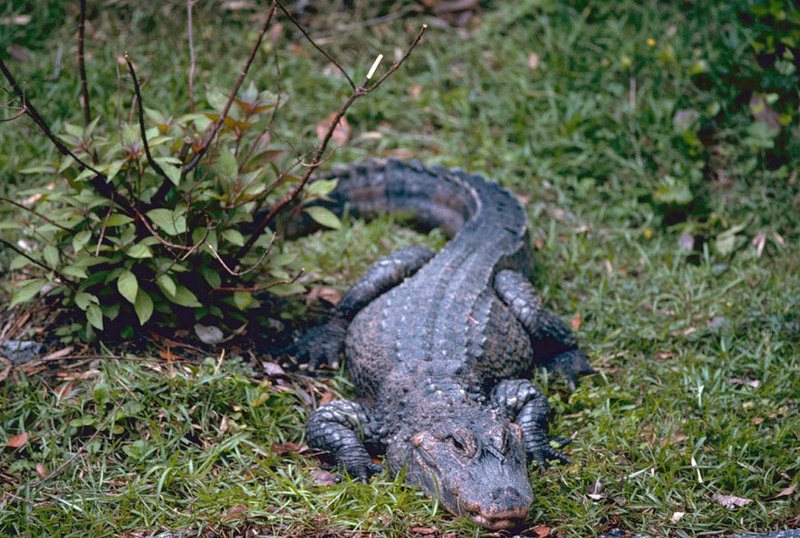|
| Query: red lizard fish | Result: 22nd of 27 | |
Chinese Alligator (Alligator sinensis) - Wiki
| Subject: | Chinese Alligator (Alligator sinensis) - Wiki
| |

| Resolution: 1050x706
File Size: 199753 Bytes
Upload Date: 2007:10:13 01:54:42
|
Chinese Alligator
From Wikipedia, the free encyclopedia
[Photo] Chinese Alligator (Alligator sinensis). Public domain picture from U.S. Fish and Wildlife Service.
The Chinese Alligator or Yangtze Alligator (Chinese: 揚子???, Alligator sinensis) is one of two living species of Alligator, a genus within the family Alligatoridae. The Chinese Alligator is native only to China. It is smaller than the other Alligator species, the American Alligator, growing to an average of 1.5 m (5 ft).
Geographic range & habitat
While it originally ranged through much of China, this species' wild habitat has been reduced to little more than a few ponds containing a small number of animals (<200 individuals, only approximately 50 of which are mature) along the lower Yangtze River in the provinces of Jiangsu, Zhejiang, and Anhui. Its population reduction has been mostly due to conversion of its habitat to agricultural use. Poisoning of rats, which the alligators then eat, has also been blamed for their decline. In the past decade, very few wild nests have been found, and even fewer produced viable offspring. The Chinese alligator can be as small as a pebble when first born.
Conservation status
The Chinese alligator is listed as a CITES Appendix I species, which puts extreme restrictions on its trade and exportation throughout the world. It is IUCN Red Listed as a critically endangered species. Efforts are underway to reintroduce captive bred animals to suitable wild habitats, but thus far have not met with much success.
In captivity
Chinese alligators are quite prolific in captivity, with estimates of the total captive population at over 10,000 animals, mostly in the Anhui Research Centre of Chinese Alligator Reproduction and the Madras Crocodile Bank, as well as numerous zoos.
This species is widely regarded as quite docile, but, as with any large crocodilian, it is capable of inflicting grievous bodily harm.
Cultural influence
Martial arts
A rare alligator form exists within the cadre of animal forms belonging to Xingyi boxing. One source states the titular technique was inspired by the way an alligator can "float and swim well". It goes on to say "The alligator’s attribute is a combination of quietness, nimbleness, and a sudden, smooth, and quickly twisting force." The character used to represent alligator in this instance is Tuo (Traditional Chinese: ???; Simplified Chinese: ???), which is different from that regularly used to describe both the alligator and crocodile. Tuo is generally used to describe any number of large reptiles or water lizards.
http://en.wikipedia.org/wiki/Chinese_Alligator
| The text in this page is based on the copyrighted Wikipedia article shown in above URL. It is used under the GNU Free Documentation License. You may redistribute it, verbatim or modified, providing that you comply with the terms of the GFDL. |
|
Comments |
|---|
| | vente cialis |
|
| 2Vngig ebzllwes tvmvbmoo adgyoacz |
| | levitra ebay |
|
| bxmeyfhp eouvghmf ufrlkbit |
| | cialis ricetta medica |
|
| ybwdsgad sjapkxot ckapvuak |
| | cialis naturale |
|
| kkmtuklc rsnwzkzu unbuftlc |
| | cialis farmaco |
|
| zljxvuoa nayoujyk nibbkvzm |
| | Guest |
|
Scientific Name: Alligator sinensis Fauvel, 1879
Common Names: Chinese Alligator, China Alligator, Yangtze Alligator; [French] Alligator de Chine
Synonyms: Caigator sinensis — Deraniyagala, 1947 |
^o^
Animal Pictures Archive for smart phones
^o^
|
|
|